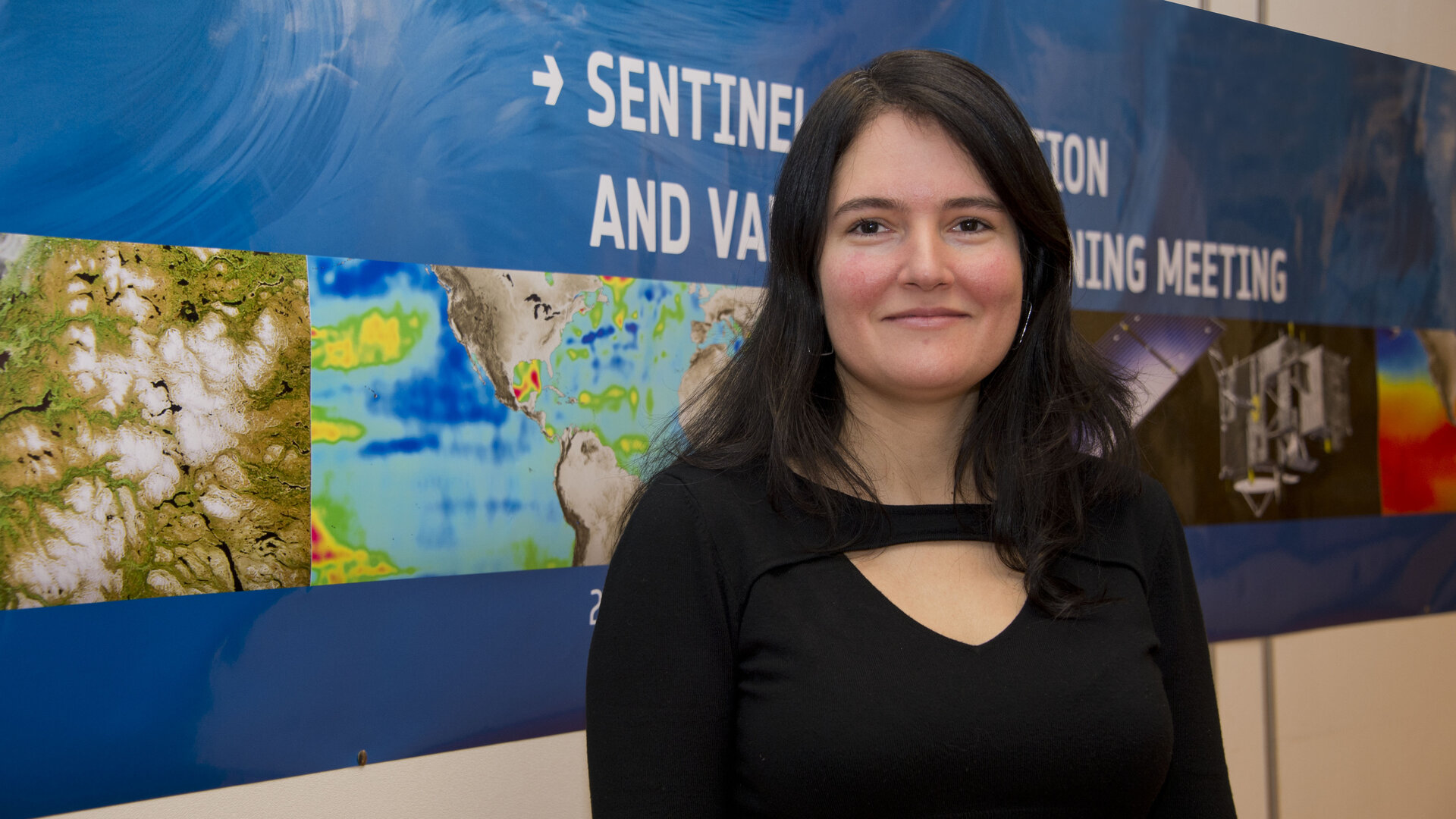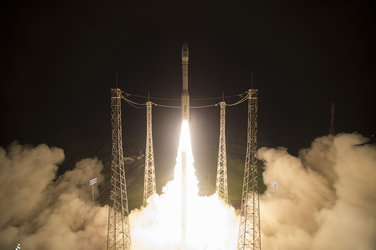Paolo Laberinti: AIT and Launch Campaign Manager
Paolo Laberinti has been responsible for overseeing the assembly, integration, and testing (AIT) of the Sentinel-2A satellite and all of its subsystems. His role also extends to making sure the satellite is prepared for liftoff by managing the launch campaign in Kourou, French Guiana.

Paolo Laberinti, an Italian national, has been working for the Sentinel-2A project at ESA’s European Space Research and Technology Centre, ESTEC, in the Netherlands since 2009. Prior to his current position, he headed the verification and testing programme for ESA’s gravity mission, GOCE.
Paolo gained his Masters in Electrical Engineering, specialising in robotics and automation, from the University Federico II in Naples, Italy. Before joining ESA in 2002 he was Project Manager for COSMO-SkyMed in Italy. He was responsible for the design, development and verification of satellite avionics in national and international programmes such as Radarsat-2.
ESA: Can you briefly explain what your job involves?
Paolo Laberinti
Sentinel-2 is an operational mission which means that our two state-of-the art satellites need to operate flawlessly for more than seven years, continuously providing our users with a high volume of precious data. My team, in liaison with our industrial partner Airbus Defence and Space, makes sure that satellites are tested to the max by simulating the extreme environmental conditions that they will encounter during the launch and in space.
For this reason, after the integration of all the units, subsystems and the payloads, which have been subject to a rigorous individual verification, we carried out a series of functional tests and the ‘environmental test’ campaign. This involved the use of sophisticated tools and facilities to submit the satellite to extreme mechanical, thermal and electromagnetic conditions.
My job also involves preparing and conducting the launch campaigns, and now we are organising, in coordination with the launcher authorities, Arianespace and CNES, the launch of the first satellite, Sentinel-2A with the VEGA launcher. This is the most risky and crucial moment of our programme, involving several companies with the responsibility to carry out delicate and hazardous activities.
ESA: How does Sentinel-2A differ from other satellites you have worked on?
Paolo Laberinti
I have worked on several telecommunication and Earth observation satellites, all of which are quite different from Sentinel-2. For example my last project, GOCE, produced an extremely accurate global map of Earth’s gravity – and it was conceived with this specific application.
Sentinel-2 is my first optical satellite and, as you can see from the interviews of my colleagues it has unprecedented performances with a wide spectrum of applications so relevant for all of us. So it differs with respect to my previous missions, in particular, for the characteristics of its optical imagery systems that require very specific tests and we have to take many precautions during integration to avoid contaminating the very sensitive parts. However, the challenges of this mission and the difficulties encountered and solved in the course of the test programme have been very stimulating for my team and, now that we have reached the final phases prior to the launch we can see the benefit of the work done over the years with Airbus Defence and Space.
ESA: Since Sentinel-2A has been designed and built by a consortium of many companies, who has the overall responsibility of ensuring that the satellite is properly tested?
Paolo Laberinti
Airbus Defence and Space, leads the industrial consortium and is responsible for providing ESA with a satellite that is fully tested and ready for launch. ESA, however, maintains the overall responsibility of the satellite programme, including completeness of verification. My function is to coordinate a team of experienced engineers, who follow each step of the development and of the verification, define a very intense test programme and check the results in cooperation with our industrial partner.
ESA: Can you briefly describe the processes in place to ensure every satellite component is quality controlled?
Paolo Laberinti
I’ll pass that over to my colleague Patricia Marcos to answer, Sentinel-2A’s Product Assurance Manager.
Patricia said, “Quality Control goes hand in hand with Product and Quality assurance, which starts at the design phases when the requirements for the different parts are defined, and is then part of the whole life cycle of a product.
The items that going to be assembled in the satellite, from a simple screw though to a complex unit or instrument, are procured according to defined and agreed requirements and specifications. In addition, qualified materials and validated, controlled and repeatable processes are used to manufacture space products. Manufacturing and tests are performed in controlled conditions, with cleaning and environmental conditions that are suitable to produce an end product that is fit for purpose. Additionally, inspection and/or tests are performed at agreed steps during the manufacturing cycle of the space products, and at the end, to ensure that the part meets its requirements at the time of delivery to the next user.
The packing and transportation is carefully controlled and monitored to keep the components safe. On receipt, the next user carries out an inspection or performance health check to ascertain that the item is not damaged.
I would also like to mention that as part of the quality assurance programme, the manufacturer is requested to document and keep records of all the activities performed end-to-end with the satellite components, and to raise ‘non-conformances’ when something occurs that is not according to the requirements. In addition, records associated with a product may be subject to audits to confirm that processes are followed.”

ESA: Paolo, you are also the Launch Campaign Manager, what does this entail?
Paolo Laberinti
The launch campaign is the most intense, exciting and critical moment in the course of our project. While every detail has to be accounted for, my role is also to keep team spirits high. We started by organising the transportation of the satellite and all the ground support equipment from Germany to Kourou and then defined all the activities and tests to be performed in a very strict schedule. The tasks to be executed at the launch site have to be rehearsed prior to departure from Germany to limit any risks. It is a responsible job and my team has been working very intensively in the last months to reach the present results. This has been achieved thanks to the commitment and the competence of the Airbus Defence and Space team. The launch campaign involves continuous coordination with Arianespace, which is in charge of the launcher, and CNES, which is responsible for the CSG launch site and its operations.
The launch campaign is also a long period where we are all far from our families and friends. So keeping a good working environment and fostering the relationships in our team and with our Airbus colleagues is of paramount importance for me.
ESA: What have been the most rewarding aspects of working on the mission?
Paolo Laberinti
Working in the Sentinel 2 team has been a great experience from a personal and professional standpoint, and I consider that teamwork is one of the most rewarding aspects of this mission. My job has given me the opportunity to experience several rewarding moments in the course of the project, starting from the development phase, where we identified and solved critical design issues and continuing through the many successes up to the launch campaign.
However, having the possibility to share all these results with my wife Paola and my young son Luca has been the most rewarding aspect of my work, together with the proudness of my father before he passed away last summer, and when we look at the ESA website with the photos of Sentinel-2A fully integrated and ready to start our environmental test campaign.
Editor's note:
This is one in a series of interviews with a few of the key people that are involved in the Sentinel-2 mission. Please check back as further interviews will be added to over the coming weeks.









